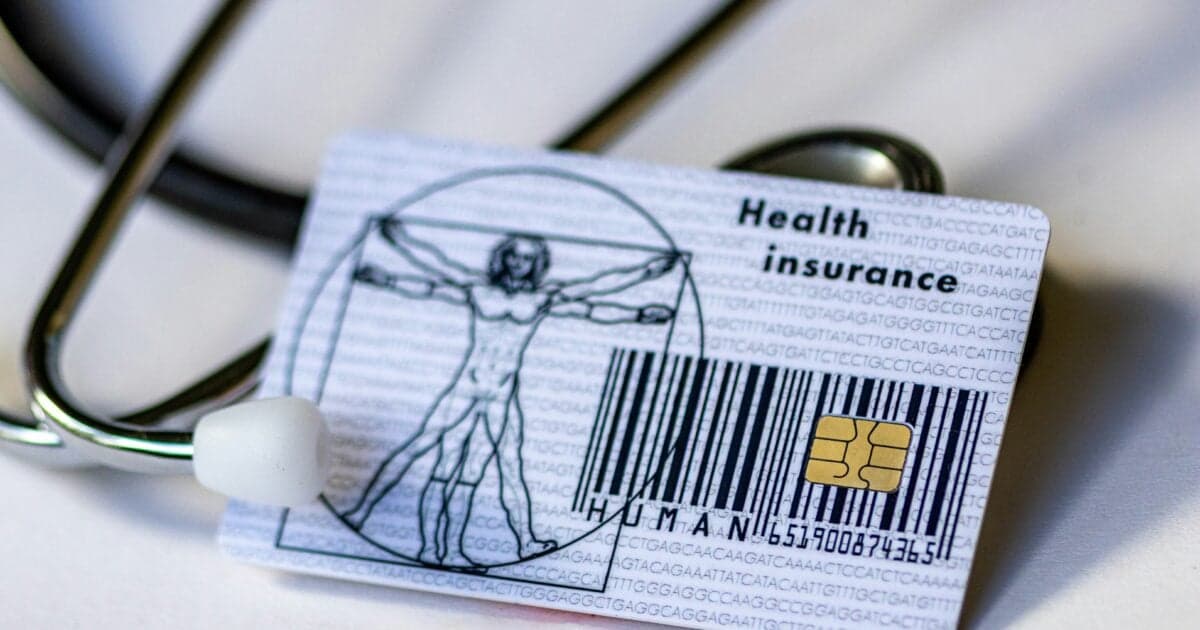UnitedHealth (UNH) Reports Earnings – Is This Stock a Turnaround Story in the Making?


Health insurance giant UnitedHealth (UNH) has made headlines for all the wrong reasons this year...
Tragically, the CEO of the company's insurance division was shot and killed last December. And the business has faced its own struggles since then.
In February, the Department of Justice ("DOJ") launched an investigation into the company's billing practices for Medicare Advantage patients... Then, in April, the stock plunged after Medicare costs came in much higher than management planned for. As if that weren't enough, the company went through an abrupt CEO change in May.
UnitedHealth's stock fell more than 60% from its late 2024 high to the end of July.
But share prices have ticked higher in recent months – and it could be a sign of new momentum.
One reason is the influence of legendary investor Warren Buffett. His firm, Berkshire Hathaway (BRK-B), bought more than 5 million shares of UnitedHealth in the second quarter. UnitedHealth's stock has risen since the news came out...
UnitedHealth reported third-quarter earnings on Tuesday. That means now is a good time to revisit this company... and see if it's on the path to recovery.
We're going to dive into the latest numbers in a moment. But first, let's go over the business and how it makes money.
The Two Engines of UnitedHealth: UnitedHealthcare and Optum
UnitedHealth is a $300 billion-plus behemoth. And it has put itself in position to manage people's health care from beginning to end.
The company has two main operating segments... UnitedHealthcare and Optum.
UnitedHealthcare is the insurance part of the business. The company controls roughly 15% of the U.S. market. Elevance Health (ELV) is in second place, with a market share of around 12%.
The insurance division is how UnitedHealth makes most of its money. A little more than 70% of UnitedHealth's overall revenue comes from collecting premium payments.
Optum, on the other hand, covers a more wide-ranging set of services. It's made up of three units...
- Optum Rx – This is the company's pharmacy benefit manager ("PBM") business. Its customers are the insurers that use Optum Rx to manage their prescription benefits.
- Optum Health – This part of the business is about caring directly for patients. Optum Health does this by employing and working with doctors, providing everything from primary care, urgent care, and outpatient surgical services.
- Optum Insight – This division uses the health care data that UnitedHealth already collects. It anonymizes the data... then builds it into predictive tools, which it can sell to companies across the health care sector.
By being both an insurer and a health-services operator, UnitedHealth is in a unique position. It not only finances care, but also delivers it, analyzes it, and increasingly manages the entire health experience.
Optum has increasingly become a larger chunk of the overall business. It accounted for 7% of sales in 2013, nearly 20% in 2019, and 25% last year. And it's what separates UnitedHealth from other insurers.
Optum has also been the company's lone bright spot for several quarters. But now, the latest earnings show that both UnitedHealthcare and Optum did well in the third quarter...
UnitedHealth's Q3 2025 Earnings Beat Expectations
After many quarters of disappointment, expectations for the quarter were low. Still, UnitedHealth delivered solid results.
The company grew sales by 12% compared to a year earlier. Specifically, year-over-year revenue growth came in at 16% for UnitedHealthcare (though margins were low) and 8% for Optum.
The main drivers for growth, according to management, were Medicare & Retirement insurance (for UnitedHealthcare) and Optum RX (for Optum).
UnitedHealth earned $2.92 per share for the quarter, soundly beating expectations of around $2.80 per share.
The company's guidance got most of the attention, though. In July, UnitedHealth had lowered its 2025 earnings target to a minimum of $16 per share. But now, management has raised that figure to at least $16.25 per share.
On the earnings call, CEO Stephen Hemsley said he is aiming for some earnings growth in 2026... But he wants UnitedHealth to get back to double-digit growth in 2027 and beyond.
The problem is, at least for now, investors still aren't convinced that UnitedHealth will bounce back.
The stock is down about 5% from Monday's close, the day before earnings. So with that in mind, let's look at what's ahead for UnitedHealth's stock...
Why UnitedHealth's 2026 Repricing Could Boost Profit Margins
It might be easy to forget after a year like this... But UnitedHealth has one of the strongest revenue track records you'll find.
The business has logged more than 25 years of annual revenue growth. Few firms anywhere can make that claim.
That's because UnitedHealth capitalizes on the best part of the insurance business.
Insurers have a built-in "price booster." As long as a firm can match its price increases with expected inflation, its revenue, earnings, and cash flow will rise consistently.
UnitedHealth has done a great job of that historically. And the company's net income has also marched consistently higher, until last year. (Net income plunged to $14.4 billion in 2024 compared to $22.4 billion in 2023.)
Part of the reason the stock is down so much now is because medical expenses have risen faster than premium growth. And that's an important mechanism to understand...
Management previously said that the company will see roughly $6.5 billion more in medical costs than expected in 2025. But that's going to change in 2026... when UnitedHealth exercises its "price booster," and reprices its benefits.
You see, insurers' premium rates and benefits reset annually through the Centers for Medicare & Medicaid Services bid process. Changes take effect each January. That annual cycle is how insurers adapt to policy shifts and cost shocks. It lets plans catch up when medical costs run hot like they have this year.
UnitedHealth is expected to increase prices across 80% of its services starting next year. And it's setting prices with the expectation of cost trends continuing to accelerate to a 10% rate for 2026.
In other words, premiums are going up. That's not great news for consumers. But it will ease a major headwind for the company.
As CFO Wayne DeVeydt said on Tuesday's earnings call...
From a tailwind perspective, our repricing efforts will be a catalyst for earnings growth as we begin returning to our long-term target margins, with particularly solid year-over-year results expected in our commercial and Medicare businesses.
While the 2025 cost surge hit UnitedHealth's business hard, the 2026 bid cycle gives it a chance to start getting back to normal and catch up on lost profitability.
Now, the 2026 repricing doesn't solve all of UnitedHealth's problems. Management still has to bring down expenses.
Plus, the DOJ probe is still hanging over the company's head. The agency is looking into UnitedHealth miscoding some Medicare Advantage information to receive higher payments from the government. UnitedHealth claims it did nothing wrong.
It's also important to point out that the DOJ hasn't accused UnitedHealth of any specific wrongdoing. So the probe doesn't necessarily mean any charges will be filed.
We'll soon find out. In the meantime, repricing will help UnitedHealth on its path to recovery. Let's close with a look at where the stock stands today...
What the Stansberry Score Says About UnitedHealth
In the end, both bears and bulls can make a case for UnitedHealth.
Investors may prefer to sit on the sidelines a few more quarters to see if the company takes more steps toward a turnaround.
But we don't have to rely on gut feelings to see where this company stands.
Our proprietary Stansberry Score helps us rank any stock with a simple score between 0 and 100. It builds our strategies for assessing value, business strength, and momentum into a one-click way to make sure that the stocks you own are quality.
Today, the Stansberry Score gives UnitedHealth B grades in every category we track – financial health, valuation, and capital efficiency. Take a look...
UnitedHealth also shows good momentum right now, earning it a Momentum Bonus.
Although the stock has bounced off its lows, it trades for just above 18 times earnings. The S&P 500, on the other hand, trades for nearly 29 times earnings.
UnitedHealth also sports a 2.4% dividend... And, again, it has caught the interest of Warren Buffett, one of the best investors in the world.
All in all, UnitedHealth still has challenges ahead. Investors are cautious. But with the recent bump in guidance – and some cost relief on the way in 2026 – this company's long-awaited turnaround could be underway.
Good investing,
Jeff Havenstein
P.S. Living well is about building your health and wealth... and having the confidence to manage both.
That's why you need to hear stories like why one dominant, "dirty" business is presenting a buy-the-dip opportunity... how a common, treatable disease can masquerade as dementia... why bull markets don't die of old age... and more.
You can find it all the free Health & Wealth Bulletin, spearheaded by our CEO, Dr. David "Doc" Eifrig.
It's full of actionable details on how you can start living and investing well – straight from Doc, Jeff, and our other top analysts.
The Health & Wealth Bulletin team has been on the leading edge of reporting new discoveries like immunotherapy, the dangers of BPA, and the truth about cholesterol... all while sharing retirement and investment insights you can use.
Make sure you take advantage of it. Sign up and start reading for free.

